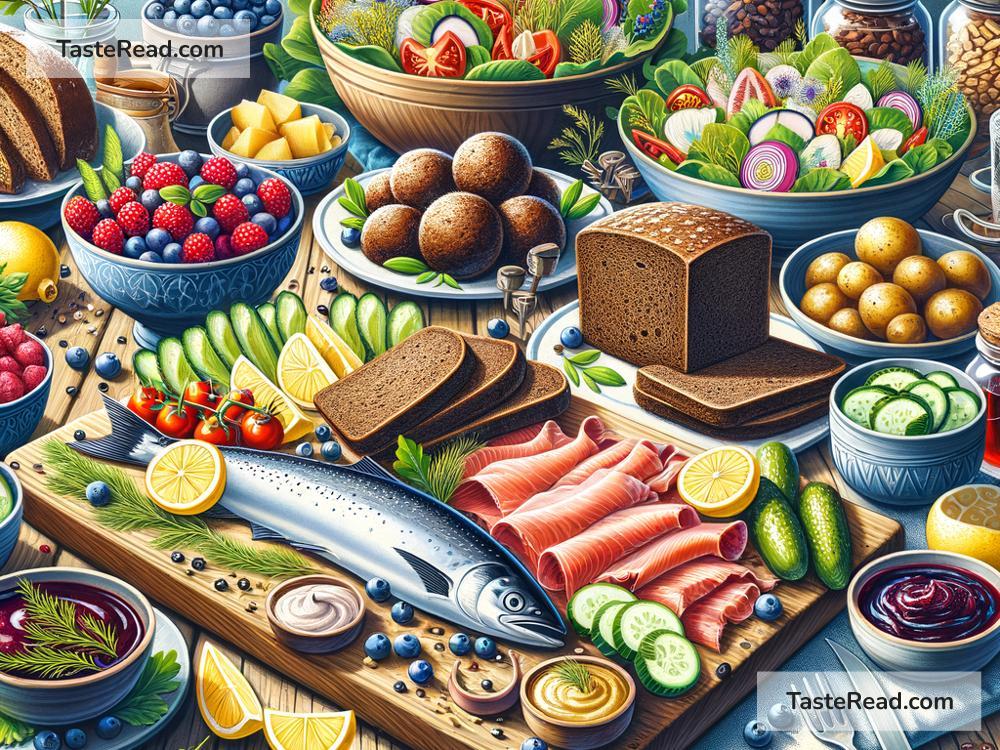The Influence of Scandinavian Smorgasbord
Have you ever heard of the smorgasbord? This delightful Scandinavian tradition is not just a way to eat—it’s a cultural experience that has influenced how people around the world think about food and gatherings. In this blog post, we’ll explore what a smorgasbord is, how it originated, and the ways it has impacted dining traditions worldwide.
What is a Smorgasbord?
A smorgasbord is a type of meal where a variety of dishes are served at the same time, and guests can help themselves to whatever they like. It’s like a buffet, but it carries a special charm and cultural significance. The smorgasbord includes everything from cold fish and meats to warm dishes, breads, cheeses, salads, and desserts. And don’t forget the seasonings—mustard, pickles, and sauces are important parts of the smorgasbord experience.
This style of dining focuses on choices and variety. Instead of a fixed plate served to everyone, guests have the freedom to pick their favorite foods and create their own meal. While it may sound simple, the smorgasbord is rooted in Scandinavian history and traditions that go back hundreds of years.
The History of Smorgasbord
The word “smorgasbord” comes from Sweden, made up of two words: “smörgås” (meaning open-faced sandwich) and “bord” (meaning table). Together, it translates to “a sandwich table.” But over time, the smorgasbord has grown to include much more than sandwiches!
The idea began in the 16th century with gatherings called brännvinsbord. These were tables of snacks to enjoy while drinking spirits like vodka or aquavit. Guests would pick at a selection of salty and savory foods to go with their drinks. Eventually, this evolved into the smorgasbord we know today—a meal featuring a wide variety of dishes, meant to cater to different tastes and preferences.
In Scandinavia, holidays like Christmas or Easter often include a festive smorgasbord that brings people together. The iconic Swedish Christmas smorgasbord, called julbord, is famous for its specialties like pickled herring, meatballs, and saffron buns. It’s more than just food—it’s about celebration, family, and warmth.
Smorgasbord Goes Global
While smorgasbord started in Scandinavia, its influence has spread far beyond the region. The idea of offering variety and letting guests choose their own food has gained worldwide appeal. People enjoy buffets at hotels, cruises, or parties—all thanks to the smorgasbord concept.
One major turning point for smorgasbord’s global fame was the 1939 New York World’s Fair. At this event, the Swedish pavilion introduced smorgasbord dining to the United States. Visitors were amazed by the Scandinavian way of enjoying meals, and it became a trend. Soon, restaurants and hotels around the world began offering buffet-style dining inspired by smorgasbord.
Today, you can find smorgasbord-style meals in many countries, customized to fit local cuisines. In Asia, for example, buffets might focus on sushi, dumplings, and noodles. In India, you’ll find curries, kebabs, and breads. No matter where you are, smorgasbord reminds us how fun it is to share food and try new flavors.
Why People Love Smorgasbord
There are many reasons why smorgasbord has become so popular. First, it’s practical. Guests don’t have to wait for courses to be served—they can eat at their own pace and try as many dishes as they want. It’s especially great for large gatherings or events with people from different backgrounds. Everyone can find something they enjoy.
Second, it’s social. Smorgasbord invites people to gather around one table, sharing food and stories. In Scandinavian culture, it represents hygge, a feeling of cozy togetherness. This sense of community makes smorgasbord meals more meaningful than just eating.
Third, it encourages creativity. Guests can mix and match foods, customizing their plates to suit their tastes. Whether you want a simple sandwich or a feast of flavors, the smorgasbord makes it possible.
Modern Spins on Smorgasbord
While traditional Scandinavian smorgasbords are still beloved, people today are putting fresh spins on the idea. For example, themed smorgasbords are becoming popular at weddings and parties. You might find a Mexican smorgasbord with tacos and nachos, or a dessert smorgasbord with cakes and pastries.
In the age of food trends, smorgasbord also fits perfectly with the growing interest in sustainability. This style of eating reduces food waste because guests can take only what they’ll eat. Plus, many modern smorgasbords feature local and seasonal ingredients, reflecting Scandinavian values about caring for the planet.
Conclusion
The Scandinavian smorgasbord is more than just a meal—it’s an experience. From its humble beginnings as a snack table in Sweden, this tradition has grown to influence dining worldwide. It’s a testament to the joy that comes from variety, sharing, and celebrating food together.
Whether you’ve experienced a smorgasbord before or are now curious to try one, it’s clear that this dining style holds a special place in our hearts. So next time you gather with family and friends, why not create your own smorgasbord? It’s not just about the food—it’s about the memories you’ll make around the table.


